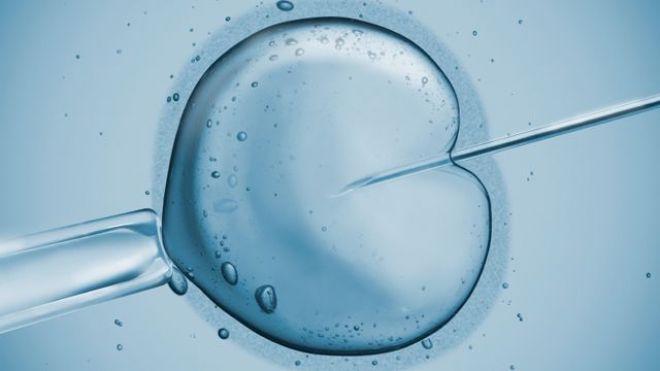
British fertility experts have devised a new IVF technique that takes thousands of snapshots of a developing embryo that they say can help doctors pick those most likely to implant successfully and develop into healthy babies.
At a briefing in London before publishing their results, the researchers said they are already using the technique to select “low risk” embryos that are the least likely to have chromosomal abnormalities that could hamper their development.
In their study, published in the journal Reproductive BioMedicine Online, the team's chances of producing a successful live birth after in-vitro fertilization (IVF) were increased by 56 percent using the new technique compared to the standard method of selecting embryos that look best through a microscope.
“In the 35 years I have been in this field, this is probably the most exciting and significant development that can be of value to all patients seeking IVF,” said Simon Fishel, a leading fertility doctor and director at the IVF clinic operator CARE Fertility where the technique is being developed.
Independent scientists not involved in the work welcomed it as a significant advance but said full randomized controlled trials - the gold standard in medicine - should be conducted before it is adopted as mainstream practice.
“This paper is interesting because we really do need to make advances in selecting the best embryos created during IVF,” said Allan Pacey of Sheffield University, chair of the British Fertility Society.
“The idea of monitoring embryo development more closely is being used increasingly in clinics around the world and so it is good to see the science involved submitted to peer review and publication,” he added. “All too often, developments in IVF are trumpeted as advances when they remain unproven.”
Experts say that today, as many as 1 to 2 percent of babies in the Western world are conceived through IVF. The standard methods of selecting embryos are based largely on what they look like through a microscope, and many IVF cycles fail because the embryo chosen and transferred to the womb fails to develop.
The scientists who led this study said that using time-lapse images, they had found that developmental delays in the embryo at crucial stages are good indicators of likely chromosomal abnormalities that could result in a failed pregnancy.
Viewing far more images
“In conventional IVF laboratories, embryo development will be checked up to six times over a 5-day period,” said Alison Campbell, Care Fertility's embryology director and the lead researcher on the study being published.
“With time-lapse we have the ability to view more than 5,000 images over the same time period to observe and measure more closely each stage of division and growth.”
Using this new knowledge, the team developed what they call morphokinetic algorithms to predict success (MAPS). By applying these MAPS to the selection of embryos, they predict they could reach a live birth rate for patients undergoing IVF of 78 percent - about three times the national average.
Fishel, whose CARE Fertility clinics are Britain's largest independent provider of assisted conception cycles, with around 3,500 a year, said he is charging around 750 pounds ($1,100) for IVF using the MAPS technique - compared to several thousand pounds for a standard IVF cycle.
But Sue Avery, head of the Women's Fertility Centre in Birmingham, said it was too soon for all clinics to adopt it.
“Until the new technique is compared to current practice we cannot know whether different embryos are being chosen,” she said. “The IVF community needs a prospective randomized controlled trial to prove that the new approach delivers better results before it can be recommended to patients.”
source : http://www.foxnews.com/health/2013/05/17/experts-devise-new-embryo-selection-method-to-boost-ivf-success/